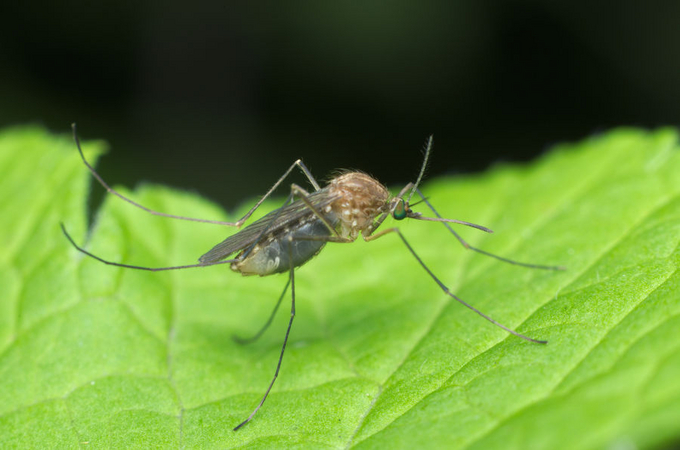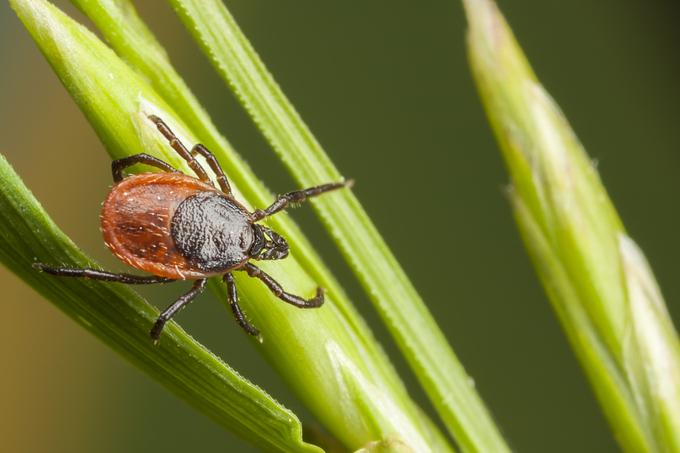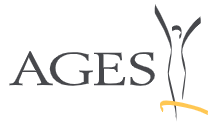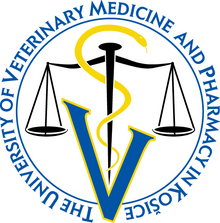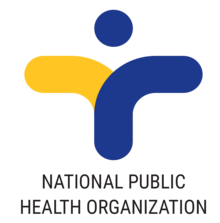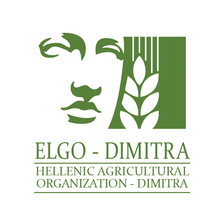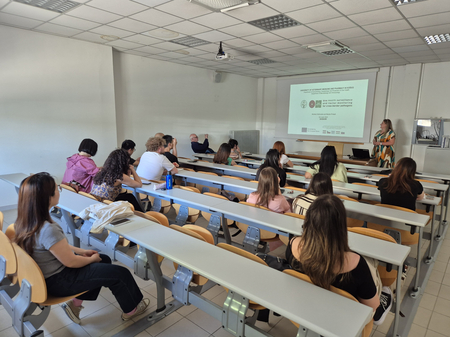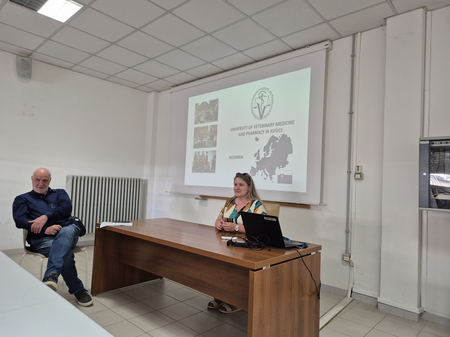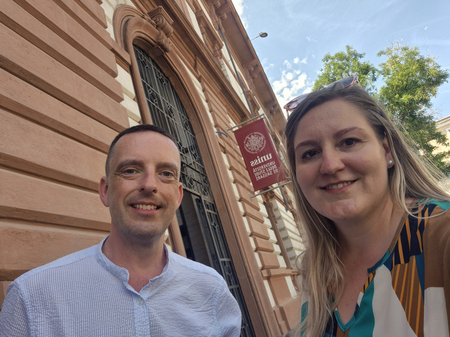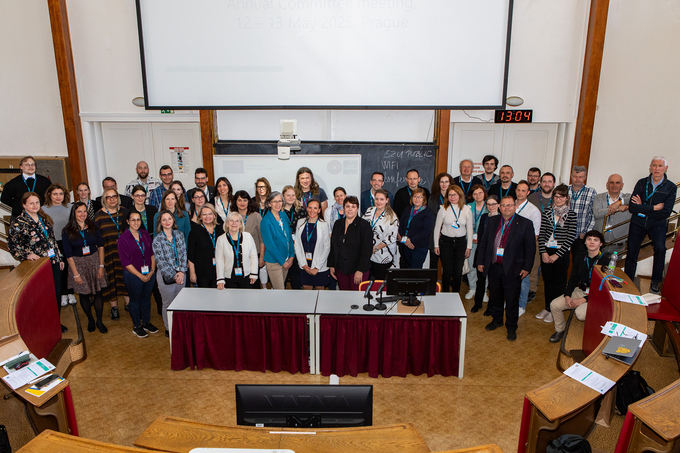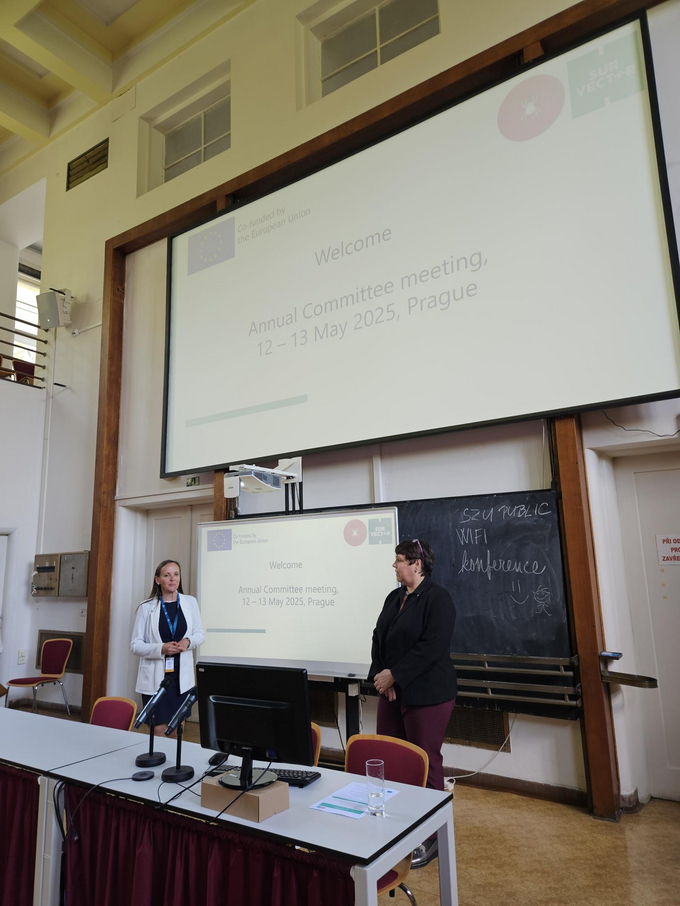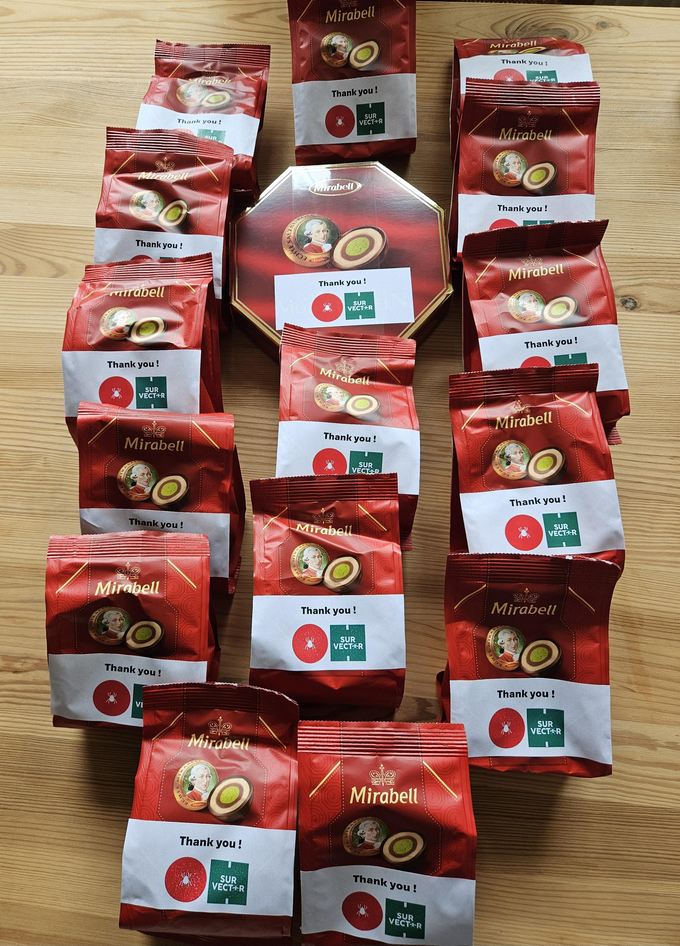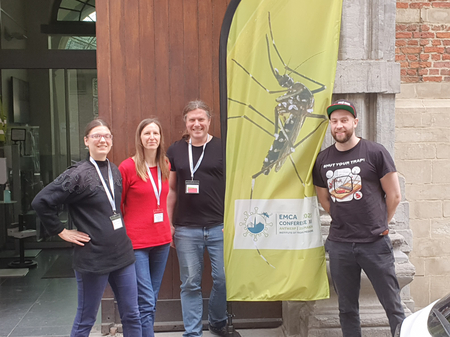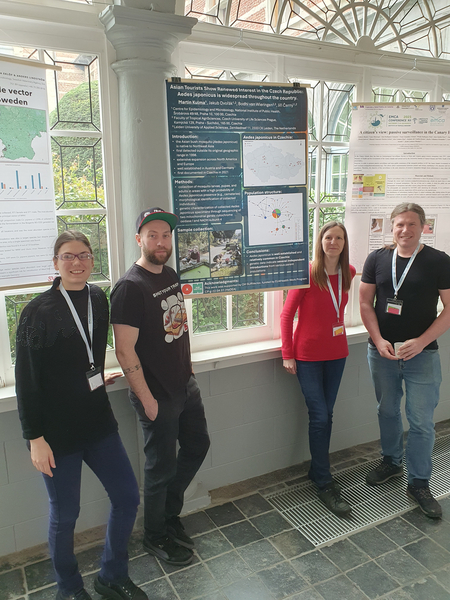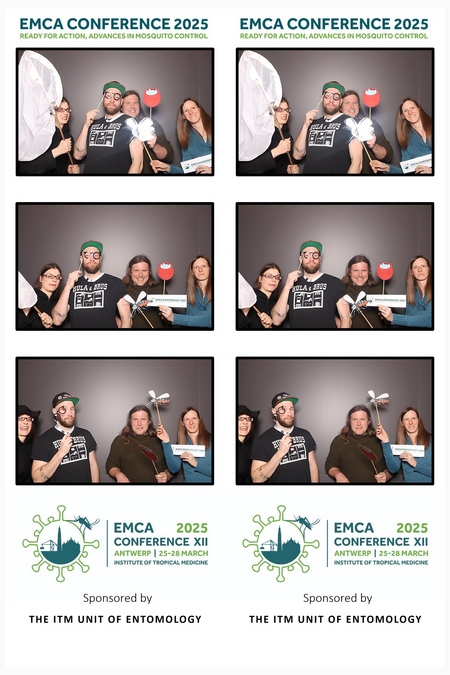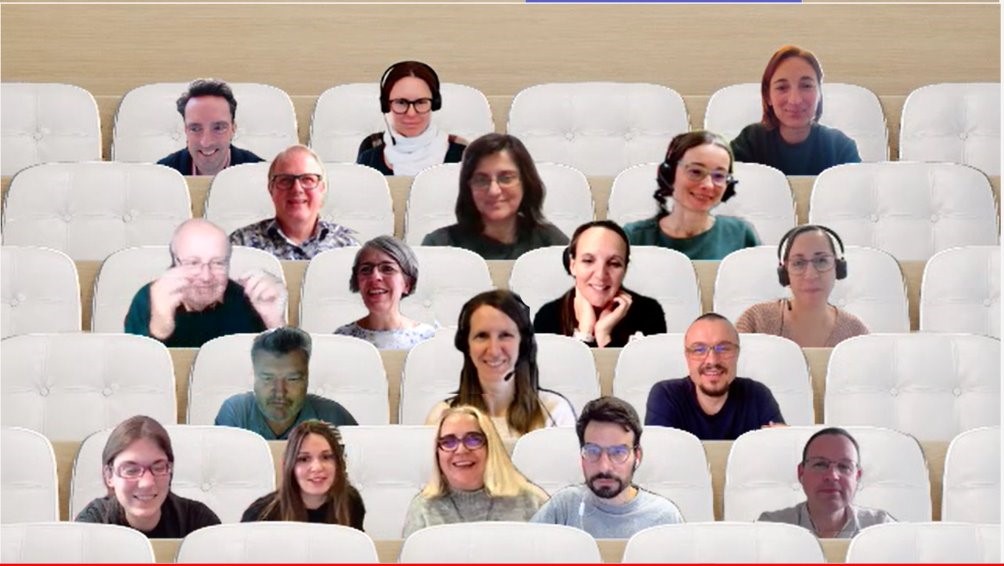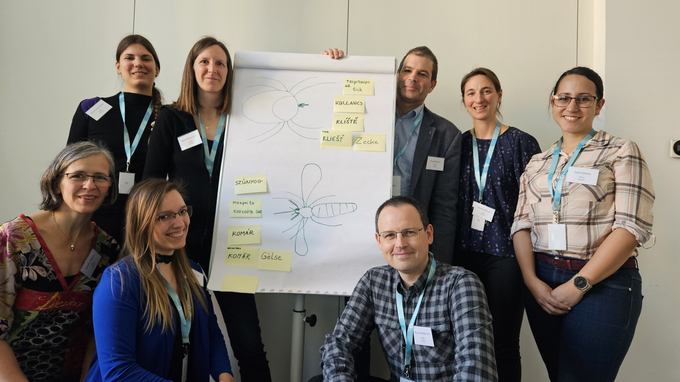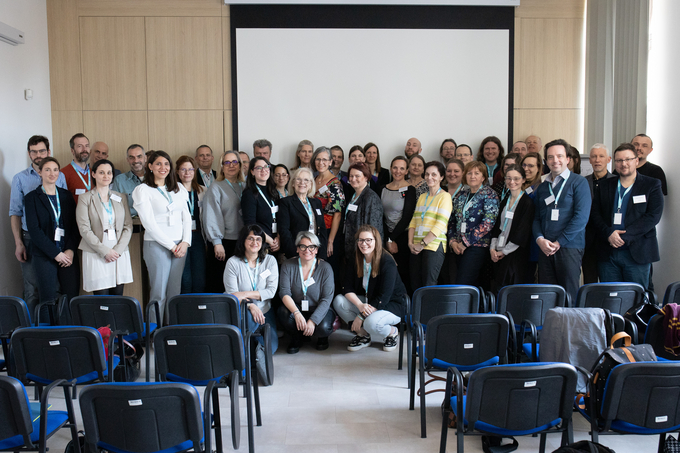One Health surveillance and Vector monitoring for cross-border pathogens
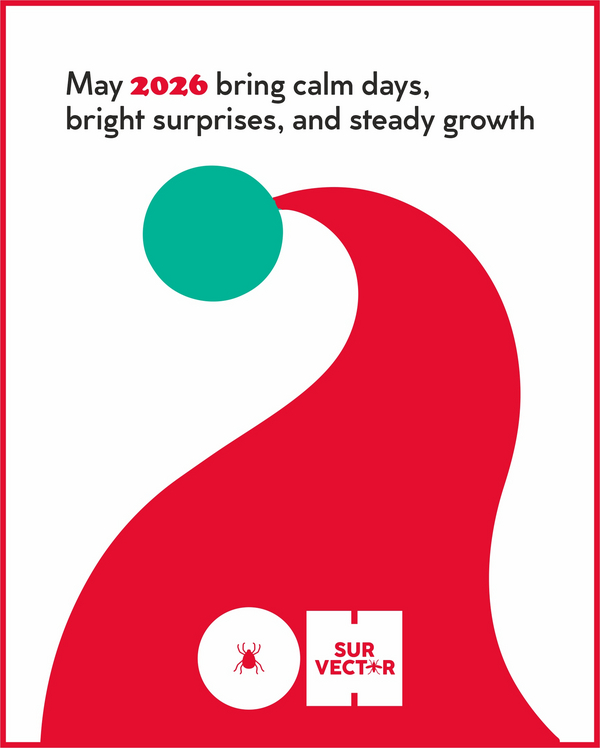
OH SURVector
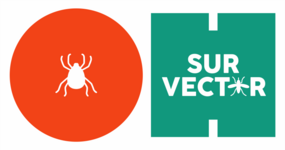
Project description
Zoonoses are infectious diseases that can be transmitted between animals and humans. The majority of all human infectious diseases worldwide are caused by zoonotic pathogens. Ticks and mosquitoes can transmit infectious diseases as vectors, thus leading to vector-borne diseases (VBDs). VBDs account for more than 17% of all infectious diseases in humans, resulting in over 700,000 deaths annually. VBDs are largely preventable through vector control. Strengthened monitoring and surveillance systems are key success factors for efficient and targeted vector control.
The OH SURVector project aims to establish a nationwide mosquito and tick monitoring system to create a One Health surveillance system for emerging pathogens. This project focuses on mosquito-borne West Nile virus, tick-borne encephalitis virus, Lyme disease bacteria, and Crimean-Congo hemorrhagic fever virus. Project activities include nationwide collection and sampling of vectors, species identification, pathogen screening, capacity expansion in laboratories, and establishment of national vector databases for the joint utilization of vector data. The OH SURVector project will address knowledge gaps associated with missing data on both vector and pathogen presence, as well as geographical and temporal patterns of vector abundance and pathogen spread.
If you have any questions about the project, please contact us: ohsurvector@ages.at
Project profile
| Project title | One Health surveillance and Vector monitoring for cross-border pathogens |
| Project acronym | OH SURVector |
| Project coordination | Annette Nigsch (AGES) |
| Consortium | Eight institutions from five countries: Austria (AGES), Czech Republic (SZU), Greece (EODY, AUTH, ELGO), Hungary (NCPHP, NFSCO), and Slovakia (UVMP) |
| Funding | EU4Health Work Program CP-g-22-04.01 (HaDEA) |
| Project duration | January 2024 – December 2026 (36 months) |

Project objectives
Together the consortium has defined the following objectives for surveillance activities over the next three years:
- the early warning of new tick and mosquito species that can transmit zoonotic pathogens,
- the early detection of newly introduced pathogens by ticks and mosquitoes,
- the early detection of changes in the geographical distribution of vectors and pathogens with a focus on Borrelia spp. and West Nile virus, and
- the strengthening of cross-sector cooperation in the sense of an integrated One Health approach.
News and activities
On 2–13 June 2025, Monika Drážovská and Marián Prokeš visited the Department of Biomedical Sciences, University of Sassari, Sardinia, Italy, as part of their training under the Erasmus+ staff mobility. They were invited by Professor Salvatore Rubino, an expert in microbiology.
During the visit, they introduced the University of Veterinary Medicine and Pharmacy in Košice and the project OH SURVector. On 3 June 2025, they presented the main activities and the first results after the first year of the project in Slovakia to the university’s PhD students. They shared their experience with the project implementation and obtaining authentic results from the field and laboratory in Slovakia. As a result of the Erasmus+ stay, cooperation at the international level was established, which can contribute to quality improvement, increase the success rate of project proposals, and lead to new scientific results.
The mobility led to a deepening of knowledge about the occurrence of selected vector-borne pathogens. The epizootiological and epidemiological situation in Sardinia and Slovakia were compared.
Our huge thanks go to Professor Rubino for his kindness, willingness, and hospitality.
Marián Prokeš and Monika Drážovská, Slovakia
Between 28th and 30th May 2025 the 7th International Scientific Congress on Zoonoses, Food-Borne and Water-Borne Diseases – Protection of Human and Animal Health and the 29th Červenka’s Days of Preventive Medicine were organized as one event by various institutions from Slovakia and the Czech Republic, including the EFSA Focal Point, the Ministry of Agriculture, and the Slovak Epidemiological and Vaccinological Society.
The University of Veterinary Medicine and Pharmacy in Košice (UVMP) and the OH SURVector project were represented by Prof. Anna Ondrejková, Dr. Jakub Lipinský, Dr. Katarína Franková, and Dr. Lýdia Gogoľová. They presented partial project results on three posters:
- Lipinský et al.: Surveillance of WNV in selected locations.
- Franková et al.: Surveillance of tick-borne encephalitis virus in urban and tourist locations.
- Gogoľová et al.: Surveillance of Borrelia spp. in urban and tourist locations.
The abstracts and contributions were published in peer-reviewed proceedings after the conference.
During the conference, the UVMP team established contacts with potential cooperation partners from the Jessenius Faculty of Medicine in Martin and Comenius University in Bratislava. Prof. Henrieta Hudečková, the head of the Institute of Public Health at Comenius University, expressed interest in future cooperation, particularly in tick collection or organizing a workshop for students from Comenius University or the Faculty of Medicine at the University of Ostrava, Czech Republic
On May 12th and 13th, the second Annual Consortium Meeting in person for the OH SURVector project was held in the beautiful city of Prague (Czech Republic), bringing together around 50 experts from Austria, Czech Republic, Greece, Hungary, and Slovakia.
This event aimed to present and discuss approaches and methodologies in vector monitoring, fostering collaboration among participating countries. Representatives from HaDEA and EFSA also attended, contributing their expertise on relevant reporting to the EU as the funding body and the reporting of data to EFSA. The experts shared insights and strategies to enhance both cross-border and regional surveillance systems. This collaborative effort is expected to improve public health outcomes by addressing vector-borne diseases more effectively.
A big thank you to the organizers!
The XII International EMCA Conference was held from March 25th to 28th, 2025 at the Institute of Tropical Medicine, Antwerp, Belgium. This year's conference theme, "Ready for Action: Advances in Mosquito Control” invited participants to exchange their experiences and practices essential for effective management of mosquitoes and other vectors.
The OH SURVector mosquito team joined the conference, or at least the “mosquito hunters” of two OH SURVector member states: From Austria, Karin Bakran-Lebl and Barbara Seebacher (AGES), and from the Czech Republic, Jiří Černý and Martin Kulma (NIPH). They were able to share the results of one year OH SURVector: Martin Kulma presented his poster “Asian tourists show renewed interest in the Czech Republic: Aedes japonicus is widespread throughout the country“.
During the key note session “Vector surveillance across landscapes“ Karin Bakran-Lebl presented her lecture “Results from the first year of the nationwide West Nile virus monitoring in Austria, 2024” followed by Jiří Černý and his input on “Systematic large-scale West Nile virus monitoring in Czechia.”
The conference covered a broad field from new mosquito control innovations as well as relevant scientific findings, sorted in key notes about topics like AI and tech in mosquito monitoring and identification, One Health in mosquito science, insecticide resistance and more.
In addition to the conference, EMCA hosted a one-day training course on March 24th with focus on the issue of insecticide resistance in mosquitoes. Karin Bakran-Lebl was able to attend the training and gained valuable insights through a mix of lectures, discussions and practical training.
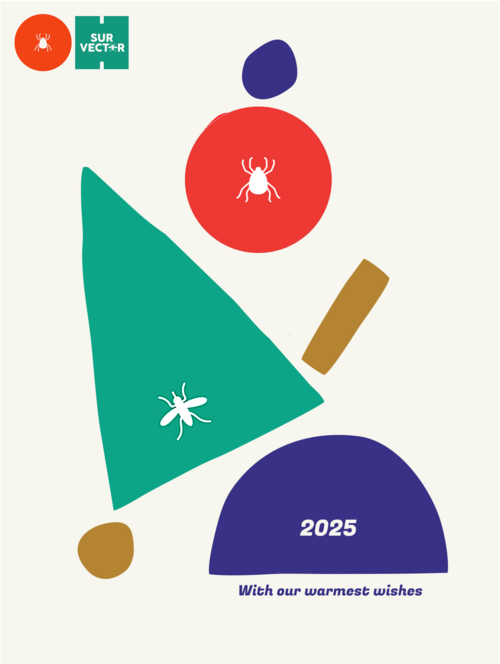
We wish all our partners, coworkers, and OH SUR Vector-fans happy holidays and all the best for 2025.
Stay healthy!
Your OH SURVector-team
On November 26, 2024, the semi-annual online meeting of the OH SURVector consortium took place. A total of 37 participants attended this important meeting.
Key Topics and Outcomes:
- Next Meeting: The next Steering Committee meeting is planned for the first quarter of 2025.
- Annual Meeting 2025: The next live annual meeting will take place in the spring of 2025 in the Czech Republic, organized by SZÚ (Czech National Institute of Public Health). A two-day meeting is planned in the historic SZÚ building, celebrating its 100th anniversary.
- Country Presentations: Various countries presented their latest research findings. Notably, Greece presented on the Aigai virus, identified as non-pathogenic and similar to a vaccine strain.
- Breakout Sessions: Specialized breakout sessions for Work Packages (WP) 2 - Fieldwork tick monitoring, WP 3 – Fieldwork mosquito monitoring, and WP 4 – Laboratory diagnostics were held, followed by a plenary session for WP 5 – Data and analysis and WP 6 – Communication and dissemination. These sessions facilitated in-depth discussions and planning of future steps.
- Data Submission: Discussions on data submission to EFSA and GBIF were conducted. Some countries take advantage of additional training for data submission, which will be provided by EFSA.
- Communication Plan: The communication plan (Deliverable 8) was discussed and will be further developed to enhance collaboration and information exchange within the consortium.
Next steps:
- Harmonization Potential: The discussion on harmonization potential of surveillance activities across countries will continue in the upcoming WP sessions.
- Data Submission: Countries are to submit their pathogen data collected in 2024 by the end of February 2025.
- Communication: A WP 6 meeting will be coordinated to finalize the communication plan and plan further communication activities.
A big thank you to all participants for their valuable contributions and dedication. We look forward to the upcoming meetings and continued collaboration!
On March 18th and 19th 2024, the kick-off meeting of the EU project OH SURVector took place in Budapest, Hungary. Colleagues from all five countries and all eight institutions attended to get to know each other personally and establish exchanges within and between the individual working groups.
After a welcome by the hosts Ágnes Dánielisz and Gábor Kardos from the Hungarian Public Health Institute (NCPHP) on the first day, project coordinator Annette Nigsch (AGES), together with former Hungarian Chief Veterinary Officer Lajos Bognár, took over moderation. To break the ice, the two most important terms of the project were initially exchanged in the respective national languages: mosquito & tick. Subsequently, the visions, goals, dos and don'ts were jointly reaffirmed.
Also present were representatives from EFSA (European Food Safety Authority) and HaDEA (European Health and Digital Executive Agency) to provide insights into ongoing tasks, explain the most important framework conditions for project implementation, and answer our open questions. The cultural program consisted of a sightseeing walk at Heroes' Square and to Vajdahunyad Castle, followed by a great Hungarian dinner at the traditional Gundel Restaurant.
On the second day, work was carried out within the individual working groups on the first milestones and deliverables. Furthermore, Annette Nigsch presented the Consortium Agreement.
A big thank you to the hosts for jointly organizing the successful kick-off meeting. We wish all participants good cooperation and success in catching mosquitoes and ticks!
Results and downloads
Aktualisiert: 11.12.2025
